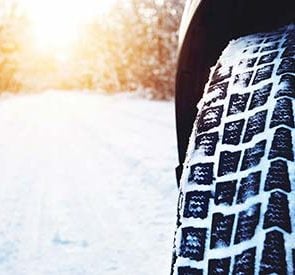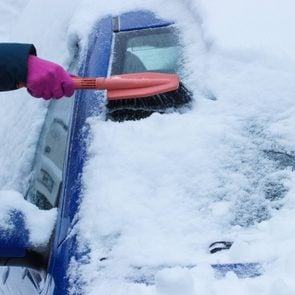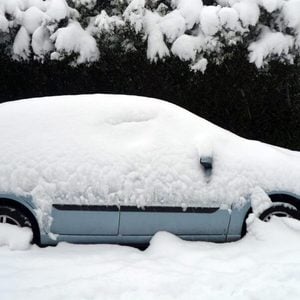Here’s Exactly What to Do When You Spot a Snow Plow on the Road
Updated: Apr. 25, 2021
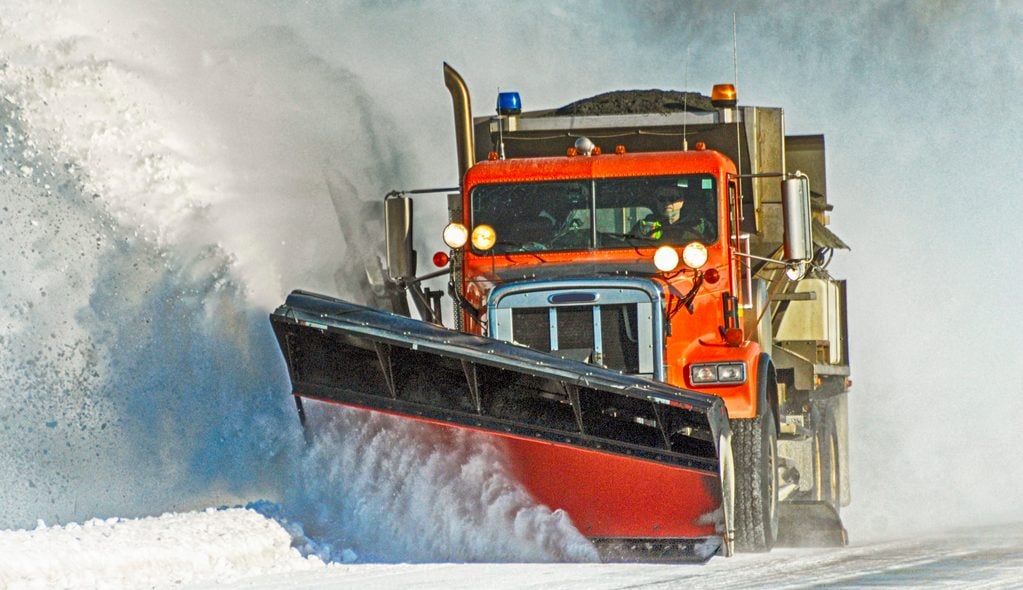
Driving in the snow can be difficult enough. What should you do when you see this huge, noisy, slow-moving vehicle? Here are some tips to make the situation as safe as possible.
Driving in snowy conditions is never ideal. And while you may know not to drive when heavy snow is falling, driving in light snow can be equally dangerous. But there are times when you have to hit the road, if not during a snowfall, then shortly after it. And if you do this, chances are you’ll encounter a snow plow.
Snow plows don’t operate like other vehicles. “Snow plows travel slowly, make wide turns, stop often, overlap lanes, and exit the road frequently,” says a source from the Ford Driving Skills for Life Team. So how do you handle driving near one? How much space should you give one, and can you pass it?
How far back should I stay from snowplows?
Of course, you should be giving any vehicle more space than usual when driving in the snow. Following closely behind another vehicle can be even more dangerous in the snow since braking distance is automatically increased. But snow plows, in particular, have significant blind spots behind them. There are also blind spots on either side of the vehicle.
“The driver’s field of vision is severely restricted behind the truck, and the driver must rely on mirrors to see to the rear and side of the truck,” explains the Ford team. This is one reason the following distance is so crucial. In addition, the Ford team says, “visibility can be reduced by blowing snow, and plow operators may need time to stop or move over to avoid stranded vehicles.” When driving near a snow plow, stay alert and aware of your surroundings, always ready to adjust your course accordingly if the plow stops or moves. This is another reason to stay plenty far back.
A safe following distance can be anywhere from 70 feet (four car lengths) to a full 10 car lengths, or about 175 feet. This will vary based on the severity of the weather, but 70 feet is the absolute closest you’ll want to be. For another scary winter car situation, here’s exactly what to do if your car breaks down in winter.
Can I pass a snow plow?
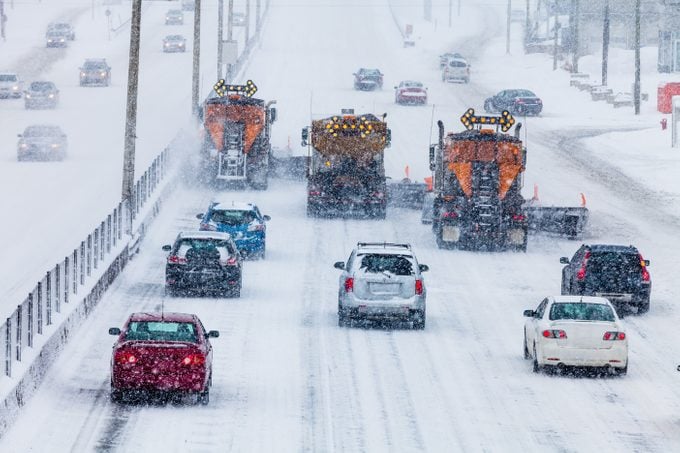 Snow plow? More like slow plow! But all joking aside, you’ve probably wondered if it’s safe to drive around a snow plow, since they move at pretty slow speeds.
Snow plow? More like slow plow! But all joking aside, you’ve probably wondered if it’s safe to drive around a snow plow, since they move at pretty slow speeds.
Well, it can be safe to pass a snow plow, if you do it the right way. “Many plows have ‘wing plow,’ a 10-12 foot extension off the [right] side of the truck that allows the plow driver to clear both the shoulder and the lane of travel in the same pass,” explains the Ford source. “These wings can weigh as much as a small compact car.” Because of this, you absolutely should avoid passing a snow plow on the right. If you must pass, pass on the left. “Allow plenty of room,” the Ford team says. “Do not cut back into the lane ahead of the plow too quickly, since the blade extends several feet ahead of the truck.”
And of course, keep in mind that, if you pass a snow plow, the road you’re now driving on will…obviously not be plowed. So you’ll now be driving on snowier pavement. So, while you can pass a snow plow, the Ford team says that it’s generally smarter and safer not to. The best thing to do when you’re driving behind a snow plow? “Stay back, wait, and allow them to clear the road.” Plus, find out how to handle 16 scary driving scenarios for all seasons.
What about if the plow is traveling in the opposite direction?
Of course, plows could be approaching you on a two-way road, too. Luckily, this is a lot easier to handle, but it can still present a potentially dangerous situation. “When you see an approaching snow plow on an undivided roadway, move as far away from the center line as you safely can,” the Ford team advises. “Blowing snow may obscure the actual width of the snow plow’s blade.” And, of course, as always when driving in the snow, make sure you turn on your lights. Always be extra careful when driving in snowy conditions—and winter in general—and avoid these winter driving mistakes that can be dangerous.
Sources:
- WKDQ: “What to Do When Driving Near a Snow Plow”

